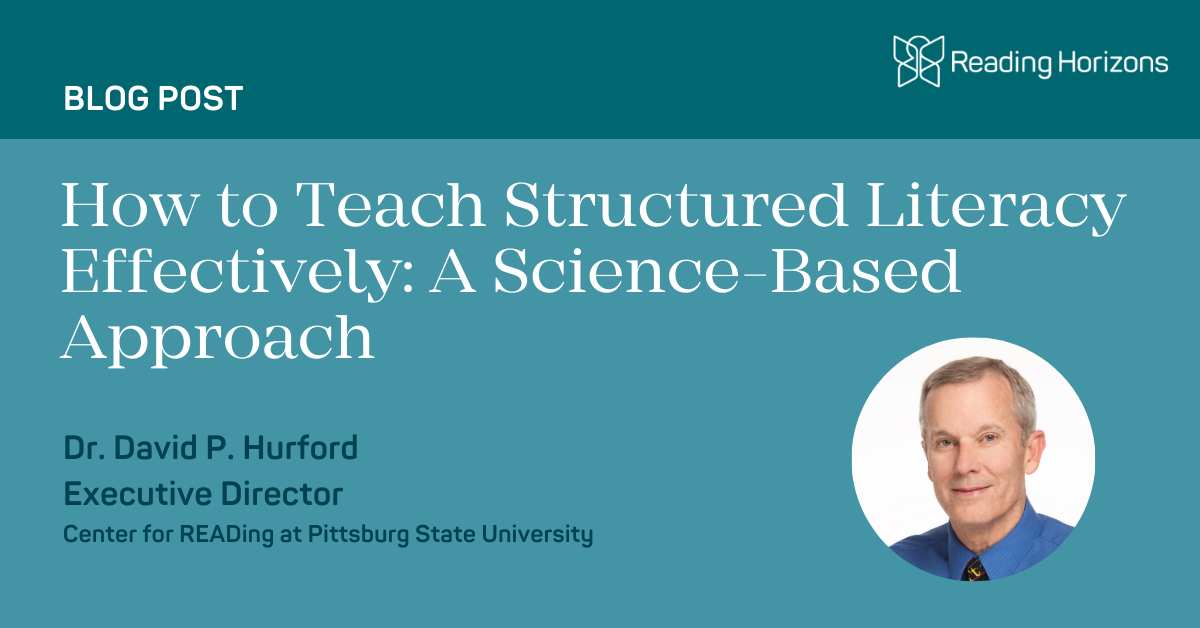By Dr. David P. Hurford
For decades, we have known how children learn to read. The Science of Reading has provided a wealth of information regarding precisely what is relevant to reading acquisition, including its subskills and typical development as well as how to modify instructional and intervention practices such that individuals with dyslexia and other reading difficulties can become competent readers. Yet, many classrooms still use outdated and ineffective methods, leaving too many students struggling. That is why I was excited to join the Literacy Talks podcast to discuss how to teach Structured Literacy effectively and ensure every child receives the instruction they need to become proficient readers.
At the Center for READing at Pittsburg State University, we conduct scientific research, provide evaluation and intervention services for individuals with reading difficulties, and participate in advocacy and awareness-raising efforts to help all students learn to read. Our mission is for as many people as possible to become competent readers. Structured Literacy is the most effective approach for teaching reading, particularly for students with dyslexia and those who struggle with decoding. Unlike three-cueing strategies, which encourage guessing, Structured Literacy provides explicit, systematic instruction in phonemic awareness, phonics, fluency, vocabulary, and comprehension—the essential building blocks of understanding how to decode and encode the English Writing System such that students can experience literacy success.
How to Teach Structured Literacy Effectively
Educators who want to teach Structured Literacy effectively should focus on these key principles:
- Explicit Instruction: Directly teaching phonemic awareness and phonics so students understand how written language works.
- Systematic Progression: Introducing concepts in a logical order, moving from simple to complex skills.
- Multisensory Engagement: Using visual, auditory, and kinesthetic techniques to reinforce learning. Multimodality techniques act as rehearsal strategies that help to move what is learned into long-term memory. These strategies also help to retrieve information and skills from long-term memory to be applied during reading acquisition.
- Cumulative Learning: Continually reviewing and building upon previously taught skills.
- Diagnostic Teaching: Assessing student progress and adjusting instruction to meet individual needs.
By implementing these strategies, educators can help all students—especially struggling readers—develop strong reading skills that will serve them for a lifetime. Reading is not only an academic problem but a social one as well. Reading difficulties place students at a greater risk for academic difficulties, school dropout, psychological and emotional difficulties, and decrease the likelihood of gainful employment and occupational success. Adult illiteracy is estimated to cost the U.S. economy $2.2 trillion annually. We can do better! We must do better! It is critical to our society that we do.
Structured Literacy in Action: What’s Changing
A growing number of states, including Kansas where our program is centered, are recognizing the importance of Structured Literacy and mandating changes to teacher preparation programs. In Kansas, ineffective methods like three-cueing have been eliminated, and Structured Literacy training is now required for educators. This shift is a significant step toward ensuring teachers are equipped with the knowledge and tools to teach Structured Literacy effectively.
If you’re an educator looking for practical guidance on how to teach Structured Literacy effectively, this podcast episode provides valuable insights and actionable strategies. We discuss the research, the challenges of implementation, and the ways educators can ensure that every student—regardless of background or ability—receives effective reading instruction.
🔊 Listen to the full episode now by clicking here. It’s time to move beyond outdated practices and embrace the science-based methods that truly work. Together, we can ensure that every child becomes a confident, capable reader.

